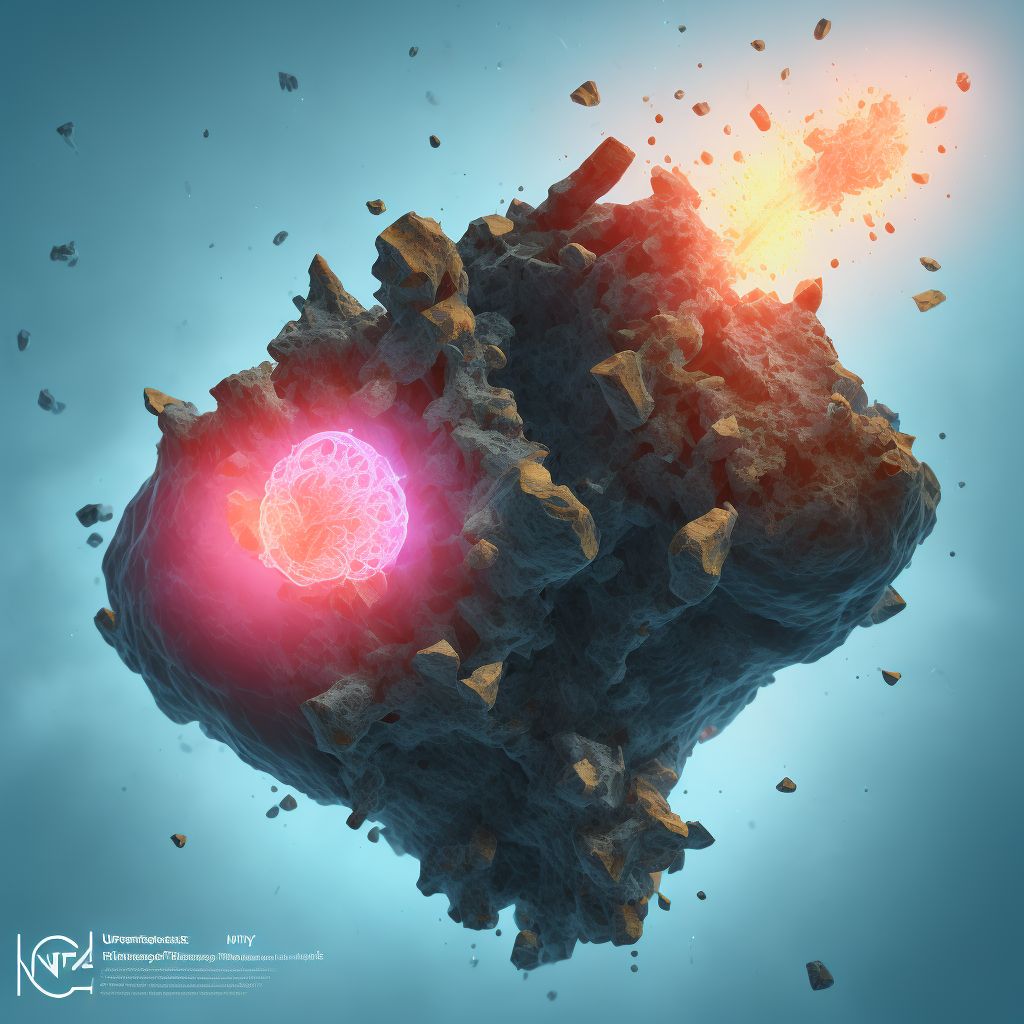
Nondisplaced fracture of unspecified tibial tuberosity, subsequent encounter for open fracture type IIIA, IIIB, or IIIC with delayed healing Save
ICD-10 code: S82.156J
Disease category: S82.156: Nondisplaced fracture of unspecified tibial tuberosity
Nondisplaced Fracture of Unspecified Tibial Tuberosity: Understanding Delayed Healing
A nondisplaced fracture of the unspecified tibial tuberosity, subsequent encounter for open fracture type IIIA, IIIB, or IIIC with delayed healing is a specific medical condition that requires attention. This type of fracture occurs when the area just below the knee cap, known as the tibial tuberosity, experiences a break without any significant displacement. However, in some cases, the fracture may heal slowly, leading to a delayed healing process.
When dealing with a delayed healing fracture, it is essential to understand the severity and type of open fracture (IIIA, IIIB, or IIIC). The classification helps determine the appropriate treatment and care required for the patient. However, this article will focus on providing general information about this condition without discussing specific treatment options.
Delayed healing can occur due to various factors, such as inadequate blood supply to the fracture site, poor nutrition, smoking, advanced age, or certain medical conditions like diabetes. These factors can impede the natural healing process, leading to a prolonged recovery period.
- Signs and Symptoms: Patients with a nondisplaced fracture of the tibial tuberosity may experience pain, swelling, tenderness, and difficulty walking or bearing weight on the affected leg. These symptoms may persist or worsen if the fracture is not healing correctly.
- Diagnosis: To determine if a fracture is healing appropriately, medical professionals may conduct a thorough physical examination, review medical history, and perform imaging tests such as X-rays or MRI scans. These tests help assess the extent of the delayed healing and guide further treatment decisions.
- Complications: Delayed healing can lead to complications like malunion (improper alignment of the fractured bone), nonunion (complete failure of the fracture to heal), or chronic pain. These complications may require additional medical interventions to promote healing and alleviate discomfort.
- Prevention: While specific treatment options are not discussed in this article, it is worth noting that some preventive measures can improve healing outcomes. These measures include maintaining a healthy lifestyle, following a balanced diet rich in nutrients, refraining from smoking, and adhering to the prescribed treatment plan provided by healthcare professionals.
It is crucial for individuals experiencing a nondisplaced fracture of the tibial tuberosity with delayed healing to consult with a qualified healthcare provider. Medical professionals can evaluate the specific case, provide a personalized treatment plan, and monitor the progress to ensure optimal healing.
Remember, the information provided here is for general understanding only and should not replace professional medical advice. Each case is unique, and healthcare professionals should be consulted
Treatment of Nondisplaced fracture of unspecified tibial tuberosity, subsequent encounter for open fracture type IIIA, IIIB, or IIIC with delayed healing:
Treatment Options for Nondisplaced Fracture of Unspecified Tibial Tuberosity with Delayed Healing
A nondisplaced fracture of the tibial tuberosity refers to a small crack or break in the bony prominence located just below the kneecap. When such a fracture fails to heal properly within the expected timeframe, it is known as delayed healing. In this subsequent encounter, we will expl...
To see full information about treatment please Sign up or Log in